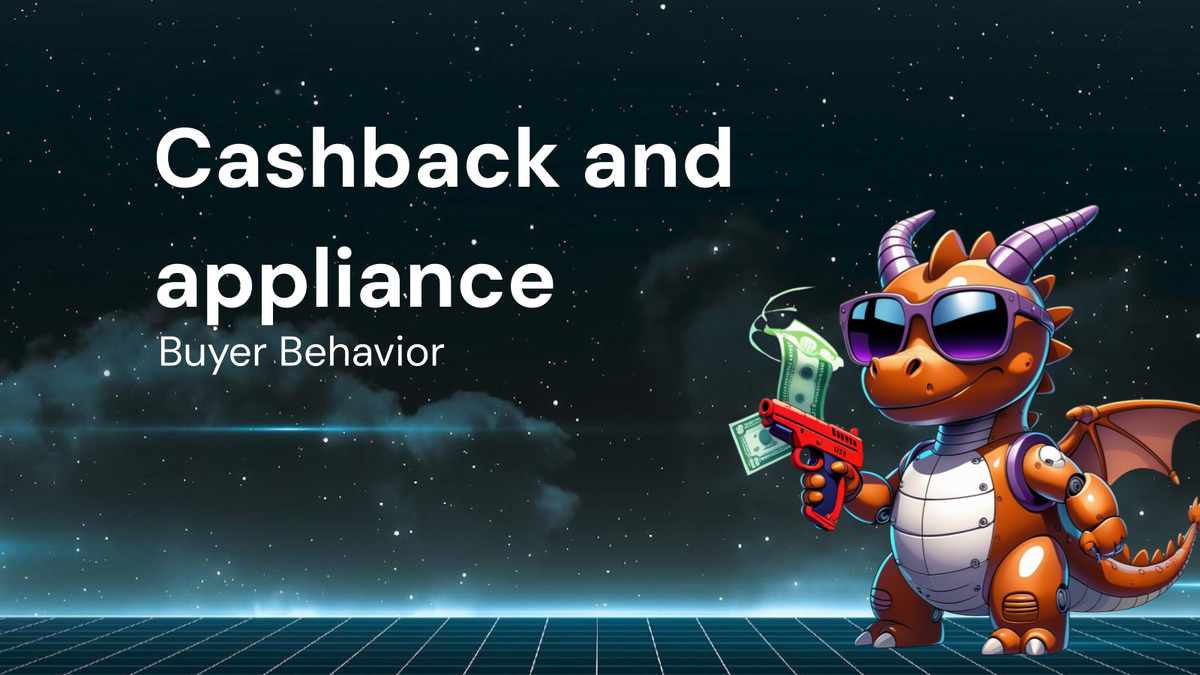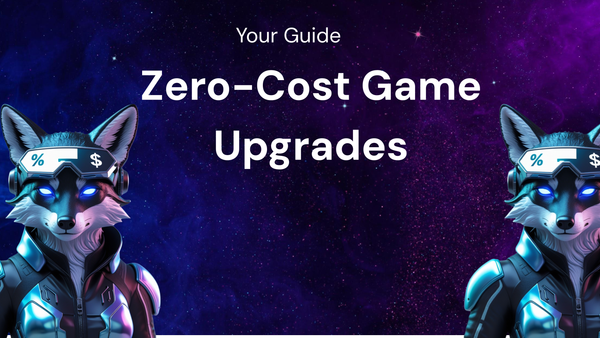How Cashback Offers Influence Home Appliance Buyer Behavior

The Allure of the Rebate: How Cashback Offers Influence Home Appliance Buyer Behavior
The modern home appliance market is a battlefield. Manufacturers compete fiercely for consumer attention, wielding innovative features, sleek designs, and, perhaps most powerfully, enticing financial incentives. Among these, cashback offers stand out as a particularly compelling tactic. These offers, promising a percentage or fixed sum of money back after purchase, can significantly sway consumer decisions, influencing everything from brand loyalty to budget allocation. This blog will delve into the complex ways cashback offers influence home appliance buyer behavior, examining the psychological underpinnings, the impact on purchase decisions, and the implications for both consumers and manufacturers.
The Psychology of Cashback: Why We Love Getting Money Back
To understand the influence of cashback offers, we must first explore the psychological principles that make them so attractive. These principles tap into deeply ingrained cognitive biases and emotional responses that shape our purchasing decisions.
- Loss Aversion: One of the most powerful psychological forces at play is loss aversion. People generally feel the pain of a loss more acutely than the pleasure of an equivalent gain. Cashback offers, framed as avoiding the loss of potential savings, are particularly effective. The prospect of missing out on the rebate, even if it's a relatively small amount, can be a strong motivator to make a purchase. Instead of focusing on the total cost of the appliance, consumers are drawn to the opportunity to "gain" money back, mitigating the perceived "loss" of spending.
- Framing Effect: Closely related to loss aversion is the framing effect, which demonstrates that how information is presented can dramatically influence choices. Cashback offers are strategically framed to highlight the potential financial benefit. For example, an advertisement might emphasize "Save $200 on this refrigerator!" rather than stating the full purchase price. This framing makes the appliance appear more attractive and the offer more compelling. The focus shifts from the expense to the potential reward.
- Anchoring Bias: The initial information presented, often the full retail price before cashback, can serve as an "anchor" that influences subsequent judgments. When a cashback offer is introduced, the perceived value of the appliance increases relative to the anchored price. Consumers may perceive the discounted price as a bargain, even if it's still within the typical price range for similar appliances. This anchoring bias makes the appliance with the cashback offer seem like a better deal compared to alternatives.
- Mental Accounting: People tend to compartmentalize their finances into different "mental accounts." Cashback offers can be particularly effective because they allow consumers to mentally categorize the rebate as "found money" or a windfall. This money is often allocated towards discretionary spending or savings, making the purchase feel less burdensome on the primary budget. The separation of the rebate from the overall expense can make the purchase seem more justifiable and less impactful on their overall financial picture.
- The Endowment Effect: Once consumers feel a sense of ownership, even a fleeting one, they tend to value the item more highly. The act of researching, comparing, and envisioning the appliance in their home can create a psychological sense of ownership. The cashback offer then acts as a further incentive to solidify that ownership and avoid the perceived loss of the potential rebate.
- Reinforcement Learning: The positive experience of receiving the cashback after purchase reinforces the buying behavior. This positive reinforcement increases the likelihood that the consumer will respond favorably to similar offers in the future, potentially leading to increased brand loyalty and repeat purchases.
Impact on Purchase Decisions: Shaping Consumer Choices
The psychological allure of cashback offers translates into tangible impacts on consumer behavior, influencing various aspects of the appliance purchasing process.
- Brand Selection: Cashback offers can significantly sway brand loyalty. Consumers may be more willing to switch brands or try a new model if a substantial cashback offer is available. Even if they have a preferred brand, the financial incentive can be a powerful motivator to explore alternative options. This is particularly true for appliances where performance and features are relatively similar across different brands.
- Model Selection: Within a specific brand, cashback offers can influence the choice of model. Consumers might be tempted to upgrade to a higher-end model with more features if a cashback offer effectively reduces the price difference between models. They may justify the upgrade by focusing on the long-term benefits of the additional features, while the cashback offer sweetens the deal.
- Purchase Timing: Retailers often use cashback offers to stimulate sales during specific periods, such as holidays or end-of-season clearances. Consumers may delay their purchase or accelerate it based on the availability of cashback offers. The sense of urgency created by limited-time offers can further motivate them to act quickly and take advantage of the potential savings.
- Purchase Location: Cashback offers can also influence where consumers choose to purchase their appliances. Retailers offering exclusive cashback promotions may attract customers away from competitors, even if the base price of the appliance is slightly higher. The perceived value of the cashback offer can outweigh the price difference, making the retailer offering the promotion the preferred choice.
- Overall Spending: While cashback offers are intended to incentivize purchases, they can also influence overall spending. Consumers might be tempted to purchase additional appliances or accessories they wouldn't have otherwise considered, simply to take advantage of the cashback offer. This can lead to an increase in overall spending, even if the individual appliance price is lower due to the rebate.
- Decision Justification: Cashback offers provide consumers with a rationale for their purchase. They can justify their decision to themselves and others by highlighting the savings they obtained through the rebate. This can reduce buyer's remorse and increase satisfaction with the purchase.
The Fine Print: Potential Pitfalls and Consumer Awareness
While cashback offers can be beneficial, it's crucial for consumers to be aware of the potential pitfalls and understand the fine print associated with these promotions.
- Complicated Redemption Process: Some cashback offers involve a complex redemption process that can be time-consuming and frustrating. Consumers may need to fill out lengthy forms, provide proof of purchase, and wait several weeks or even months to receive their rebate. The complexity of the process can deter some consumers from claiming their cashback, effectively reducing the actual savings.
- Specific Requirements and Restrictions: Cashback offers often come with specific requirements and restrictions that consumers must adhere to. These may include purchase date limitations, eligible models, specific retailers, and limitations on combining the offer with other promotions. Failing to meet these requirements can result in disqualification from the cashback program.
- Hidden Costs: Consumers should carefully compare the total cost of the appliance, including shipping, taxes, and any additional fees, before factoring in the cashback offer. Sometimes, the base price of the appliance may be inflated to offset the cost of the rebate, making the overall deal less attractive.
- Data Privacy Concerns: Some cashback programs require consumers to provide personal information, such as their name, address, and email address. Consumers should be aware of how their data will be used and whether it will be shared with third parties. It's important to read the privacy policy carefully before participating in a cashback program.
- Potential for Deception: In rare cases, cashback offers may be misleading or deceptive. Retailers may advertise unrealistic cashback amounts or make it difficult for consumers to redeem their rebates. It's essential to be wary of offers that seem too good to be true and to research the retailer's reputation before making a purchase.
Implications for Manufacturers and Retailers: A Strategic Tool
Cashback offers are a powerful strategic tool for manufacturers and retailers, allowing them to achieve various business objectives.
- Boosting Sales: The primary goal of cashback offers is to stimulate sales and increase market share. By offering attractive rebates, manufacturers and retailers can attract new customers, encourage existing customers to upgrade, and drive overall sales volume.
- Managing Inventory: Cashback offers can be used to manage inventory levels and clear out older models. By offering rebates on specific appliances, retailers can incentivize consumers to purchase those models and reduce excess inventory.
- Building Brand Loyalty: Cashback offers can help build brand loyalty by providing consumers with a positive experience and reinforcing their purchase decision. Consumers who are satisfied with the rebate process are more likely to purchase from the same brand in the future.
- Gaining Competitive Advantage: In a competitive market, cashback offers can provide a significant advantage. By offering more attractive rebates than their competitors, manufacturers and retailers can attract customers and steal market share.
- Gathering Consumer Data: Cashback programs provide manufacturers and retailers with valuable consumer data, such as purchase history, demographics, and preferences. This data can be used to improve marketing efforts, develop new products, and personalize the customer experience.
Conclusion: Navigating the Cashback Landscape
Cashback offers are a potent force in the home appliance market, shaping consumer behavior in significant ways. By understanding the psychological principles that underpin their appeal and being aware of the potential pitfalls, consumers can make informed decisions and maximize the benefits of these promotions. For manufacturers and retailers, cashback offers represent a powerful strategic tool for driving sales, managing inventory, building brand loyalty, and gaining a competitive advantage.
However, responsible implementation and transparent communication are crucial. Overly complex redemption processes, hidden restrictions, or misleading advertising can erode consumer trust and damage brand reputation. By prioritizing transparency and fairness, manufacturers and retailers can ensure that cashback offers remain a valuable tool for both businesses and consumers.
Ultimately, the key to navigating the cashback landscape lies in informed decision-making. Consumers should carefully evaluate the terms and conditions of each offer, compare prices across different retailers, and consider their own individual needs and preferences before making a purchase. By doing so, they can harness the power of cashback offers to save money and find the perfect home appliance for their needs. The allure of the rebate remains strong, but a savvy and informed approach is the best way to ensure a truly beneficial outcome.




